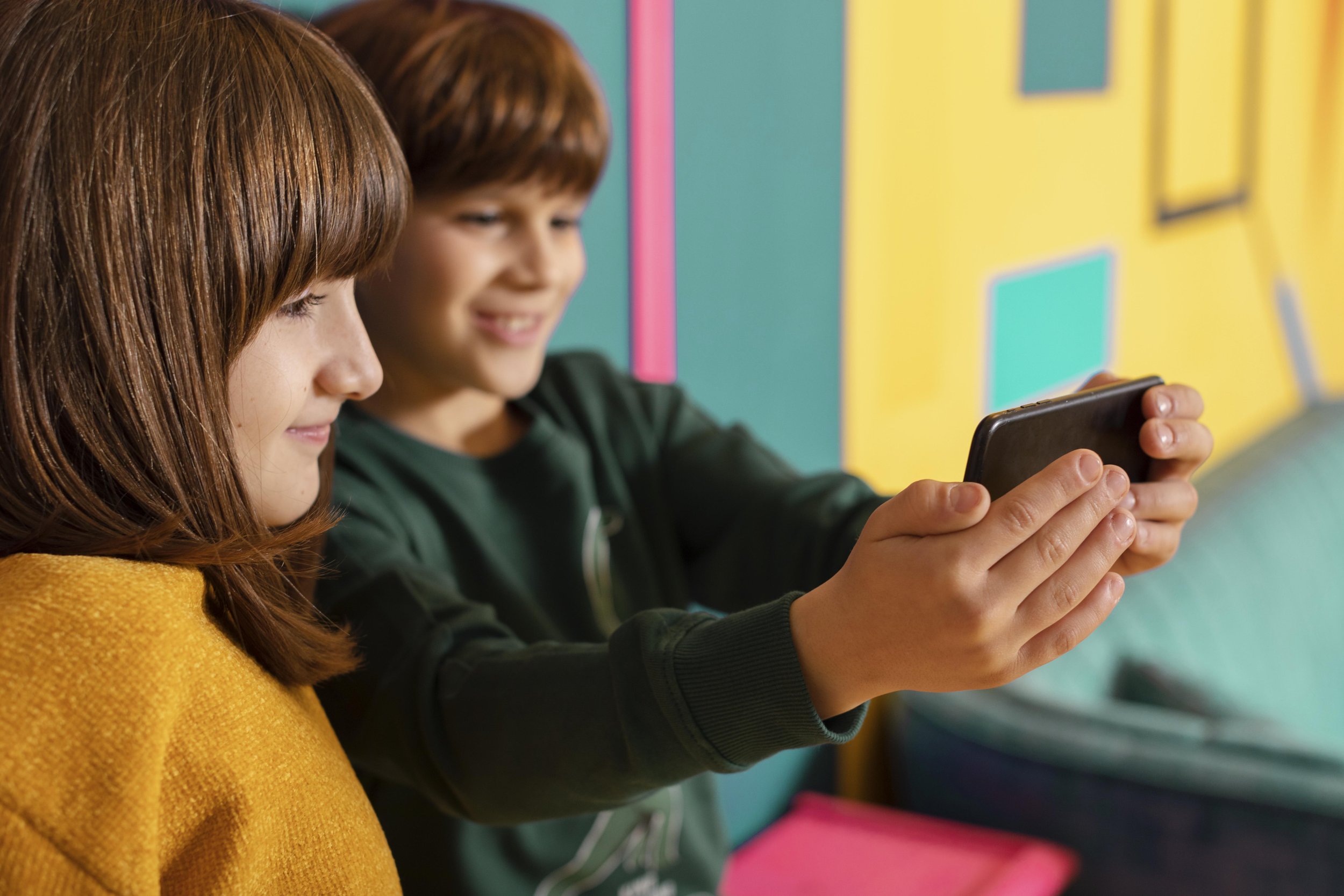
Curiosci
Year
2024
Category
UXUI · Case Study
Curiosci is an elementary science education app that combines entertaining games, animations, and collaborative multiplay for a stress-free and engaging learning experience.

Project
Solo · 2 Weeks Design Challenge (24.02.12 - 24.02.26)
Role
User Research · User Testing · Branding Strategy · UI Design

As technology advances, there's a worry about how digital entertainment, especially fast-paced and competitive games, affects the mental well-being of younger generations. Many of these games lack educational value. I identified a need for a digital entertainment product that promotes mindfulness and imparts science knowledge.
Solution
Curiosci
Curiosci combines level-specific entertaining games, animations, and collaborative multiplay to provide an stress-free learning experience. Our focus is on enjoyable activities and informative content, with the goal of fostering a positive attitude towards science education in the changing landscape of technology.
Curiosci
01
Diverse Subjects
Users have fun learning about different science topics with cool animations, answering quizzes at different levels, and unlocking new chapters for achievement.
02
Learning with Quiz Game
Users engage in quizzes tailored to their difficulty levels, utilizing hints for challenging questions and analyzing incorrect answers to learn science.
03
Collaborative Learning
Users collaborate in multiplayer mode, working together to solve problems and achieve shared success.

How was this problem solved?
Research
Deeper Insight
Competitive Analysis
Ideation
User Persona
User Interviews
Positioning
Features
IA
Design
Brainstorming
Low-Wireframes UI
Mid-Wireframes UI
Branding
Design System
Outcome
Prototype

Research
Deeper Insight
01
164 million Americans, particularly those under 18, play games, with kids aged 8 to 17 spending 1.5 to 2 hours daily gaming.
Modern games prioritize competition over learning, potentially impacting education, health, and social interactions.
02
Deeper Insight
03
Deeper Insight
Gaming's impact on attention varies, with studies indicating potential cognitive benefits such as improved reaction time and attention span.
I examined the top 7 popular science education apps globally to understand their focus, features, and assess their strengths and weaknesses.
Science education apps for kids tend to concentrate on a single topic, promoting solo play, potentially dampening interest in science.
My app addresses this gap by offering diverse science topics for children and implementing a multiplayer mode to enhance learning enjoyment and foster a sense of accomplishment.
Diverse Topic
Multiplayer Mode
Ideation
Anton is searching for a game that fosters imaginative play, providing opportunities to delve into scientific concepts through interactive activities and exploration.
Student
Sophia is looking for an educational tool rooted in scientific principles, designed to adaptively adjust difficulty levels and customize content delivery based on the individual progress of each student.
Teacher
Two key personas were created—students and teachers—reflecting the evolving educational landscape where educational apps are not only recognized but also recommended as crucial tools.
User Interview
Min (Elementary Teacher)
Kim (Elementary Student)
Lee (Elementary Student)
After interviewing one teacher and two students, it became clear that game-based learning is highly effective for children.
Using educational games like Quizlet and incorporating elements such as indirect learning, team activities with friends, hints, and a point system significantly boosts engagement.

Active Learning
Collaborative Learning
After analyzing science education apps and reflecting on user interview, I realized that while observational learning and individual learning are crucial, the level of children's engagement directly influences their interest.
Based on this understanding, I believe that education apps focusing on Active Learning and Collaborative Learning, including multiplayer modes for cooperative gameplay, are essential to capture the interest of children.
Recognizing the essential elements of educational app, I have identified key features:
Educational Game Platform
Community Learning Experience
Engaging Group Challenges
Comprehensive Resource Hub

IA
I made sure that users can easily find and use important features by creating a user-friendly Information Architecture (IA).
Design Process
I identified effective features and researched the best solution. For UI design, I prioritized easy access and user-friendly flow. In development, I refined the design system, adjusting colors and elements to enhance the app's visual appeal while aligning with its educational theme.
Brand Identity
I wanted the app to be dynamic, playful, and friendly. I picked five vibrant colors and used the lively 'Luckiest Guy' font for the logo, adding a playful touch. Also, I used the rounded 'Poppins' font to create a fun atmosphere for kids.
The app is named "Curiosci," a blend of "curiosity" and "science," signifying the essence of creatively combining curiosity and science. The logo represents the convergence of five scientific fields into one cohesive unit.

Mission
We're on a mission to create an education app that makes science incredibly fun for kids. Our goal is to spark excitement for learning by turning science into something awesome and enjoyable. We aim to inspire a lifelong love for science in kids, encouraging them to explore, ask questions, and discover the amazing world around them.
Group Challenges
Teachers, captivate their students with Engaging Group Challenges. Students, enjoy the thrill of conquering every challenge together.
Resource Hub
Users have a blast with diverse fun science books, explore the lives of famous scientists, and discover valuable insights into their contributions to modern science.

Reflection
Through this case study, I've realized that there are many science apps designed for children, and I've come to understand the importance of visually appealing content to engage their interest.
Next Steps
Gather diverse opinions by conducting user interviews with more educators and students. Specifically, I'm interested in discussing topics such as game mechanics, educational aspects, and content. For instance, I'd like to ask which learning topics were most interesting and what insights were gained from those experiences.
Make the quiz-solving screen more exciting for kids by incorporating vibrant animated effects and different congratulatory messages when solving quizzes. I believe using various effects is important to keep them interested in the game and feel a sense of accomplishment.

























































